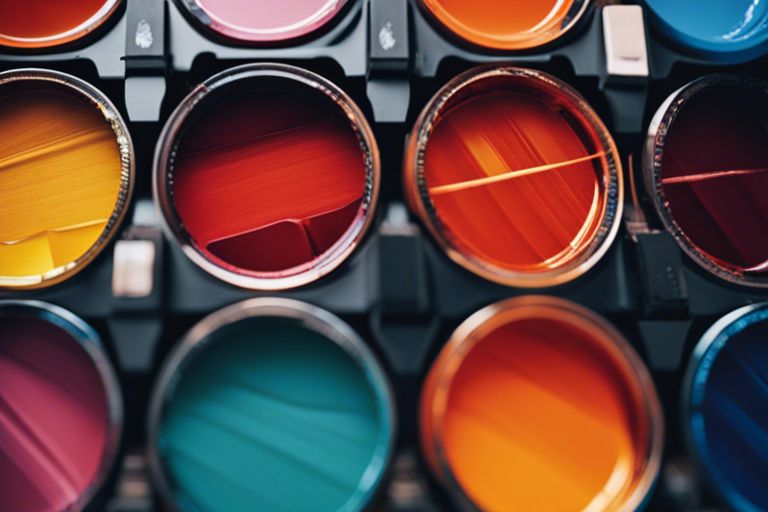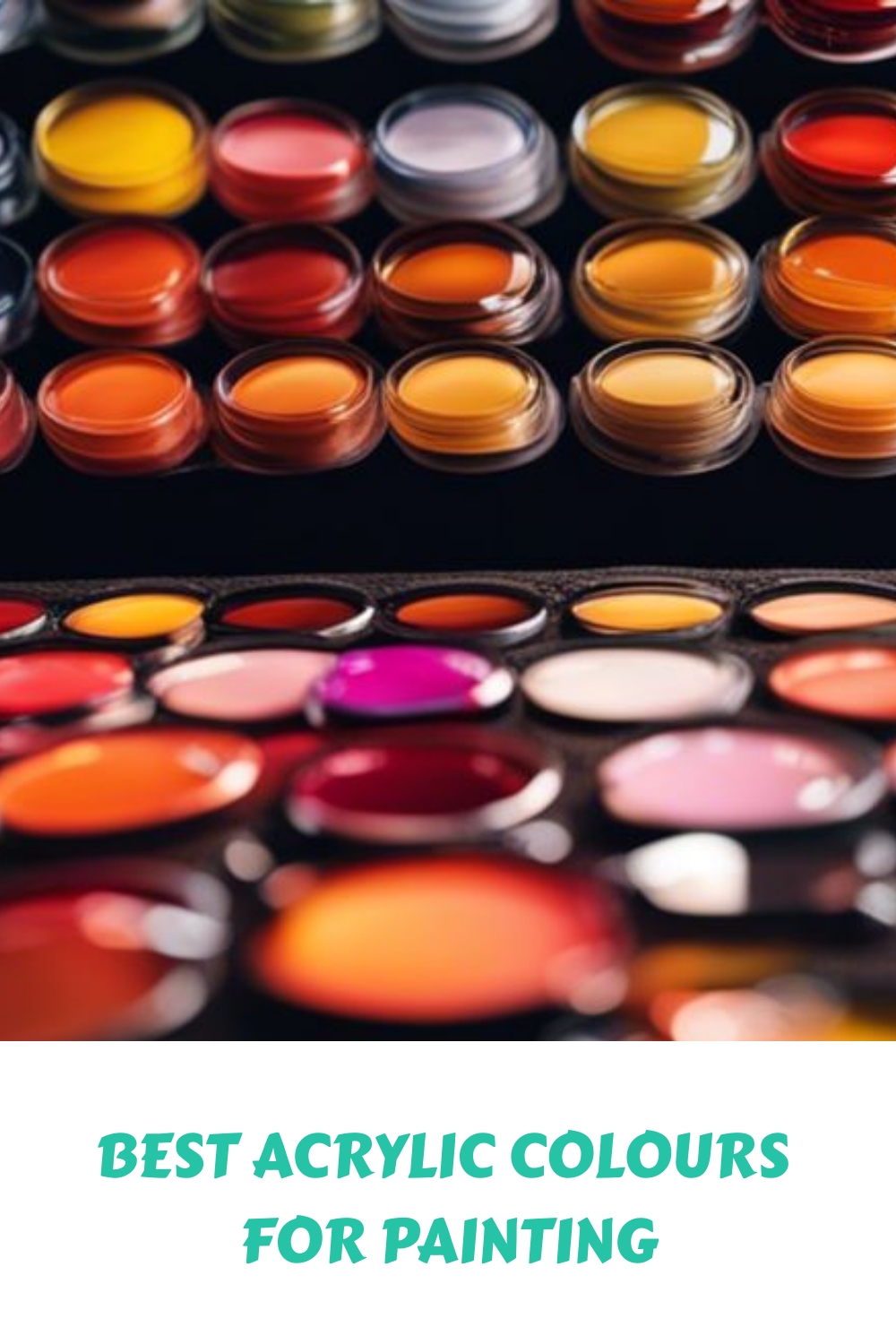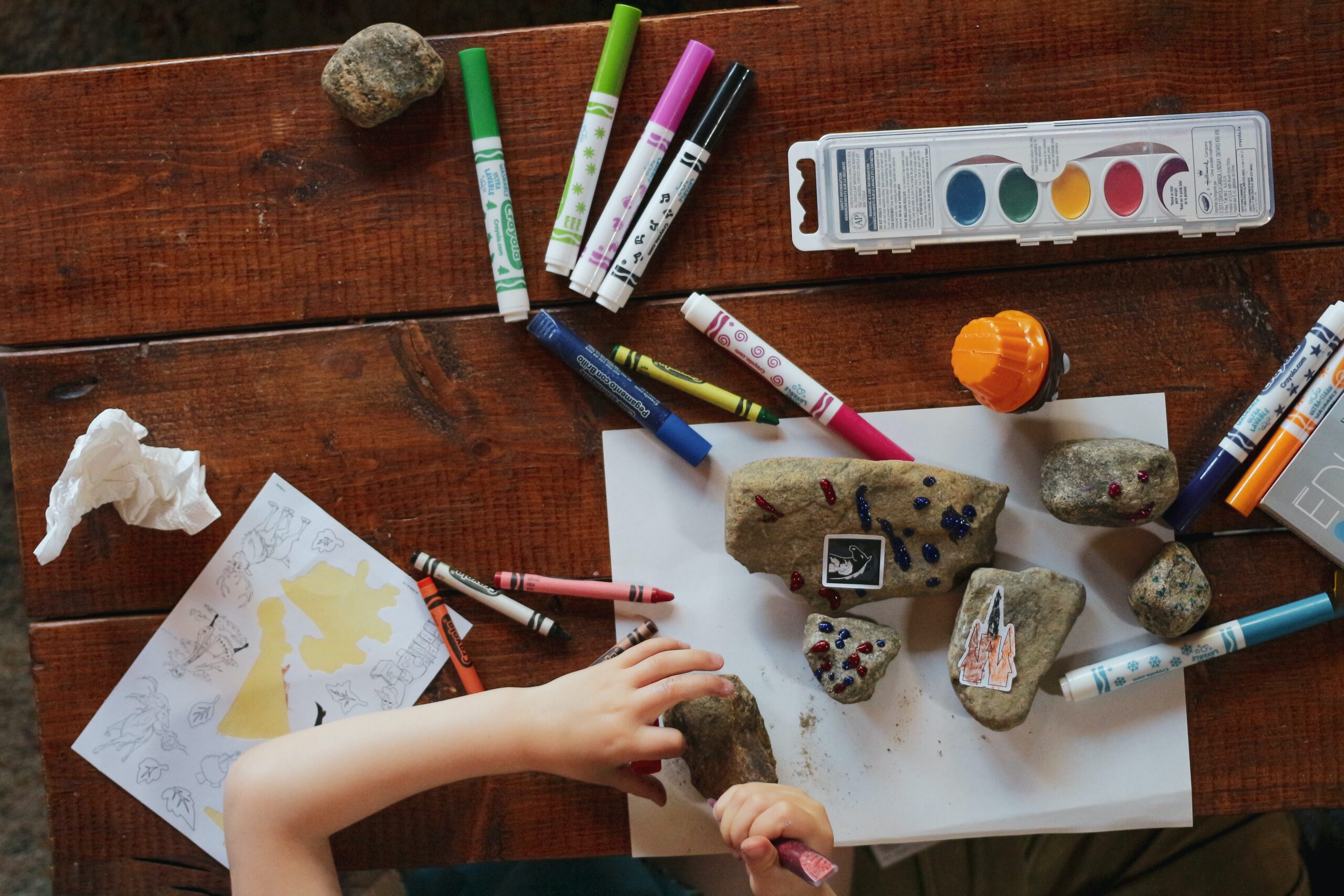Pigmented with vibrant hues and versatile in their application, acrylic colours are a top choice for artists seeking to bring their visions to life on canvas. In the context of selecting a basic colour palette for acrylic painting, there are key factors to consider. From the primary colours that form the foundation of any artwork to the important shades that add depth and dimension, choosing the right acrylic colours can make all the difference in the final piece. In this definitive guide, we investigate into the world of acrylic painting to help you select the best colours for your artistic endeavors.
Key Takeaways:
- Consider your preferred subject matter: Choose acrylic colors that best complement the subjects you enjoy painting, whether it be landscapes, portraits, still lifes, etc.
- Invest in primary colors: Red, blue, and yellow are vital for mixing a wide range of secondary and tertiary colors. It’s recommended to have high-quality versions of these primary colors in your palette.
- Experiment with additional colors: Depending on your personal style and preferences, consider adding colors like white, black, burnt sienna, sap green, and ultramarine blue to create depth and variety in your acrylic paintings.
Understanding Colour Theory
Primary Colours and Mixing
Some of the best acrylic colours for painting are the primary colours – red, blue, and yellow. These colours are fundamental because they cannot be created by mixing other colours together. By combining these primary colours in various ratios, you can create an infinite range of secondary and tertiary colours to use in your paintings.
The Colour Wheel and Colour Relationships
The Colour Wheel is a valuable tool for artists to understand how colours relate to each other. One of the basic concepts is complimentary colours – colours that are opposite each other on the colour wheel. Mixing these colours together can create rich and vibrant contrast in your paintings. Understanding the relationship between warm colours (such as red, orange, and yellow) and cool colours (such as blue, green, and purple) can also help you create balance and harmony in your compositions.
One way to use the colour wheel is to create analogous colour schemes, which use colours that are adjacent to each other on the wheel. This can result in paintings that have a cohesive and harmonious feel.
Essential Acrylic Colours for Beginners
Clearly, choosing the right acrylic colours for your painting can make a significant difference in the outcome of your artwork. To learn more about necessary colours for beginners, check out Essential Colors for Getting Started With Acrylics.
Recommended Primary Colours
One of the key primary colours recommended for beginners in acrylic painting includes Cadmium Red, Cadmium Yellow, and Ultramarine Blue. These primary colours can be mixed to create a wide range of secondary colours for your artwork.
Versatile Secondary and Tertiary Colours
To expand your colour palette, consider incorporating colours like Titanium White, Burnt Umber, and Phthalo Green. These versatile secondary and tertiary colours can add depth and variety to your paintings.
Colours play a crucial role in creating visually appealing and dynamic artworks. By carefully selecting a range of necessary acrylic colours, beginners can explore their creativity and enhance their painting skills.
Quality and Characteristics of Acrylic Paints
Pigment Density and Opacity
To ensure the vibrancy and depth of your acrylic paintings, it is imperative to consider the pigment density and opacity of the acrylic paint you choose. Quality acrylic paints with higher pigment density provide a more intense color payoff and better coverage, allowing you to achieve rich, bold hues and opaque layers with ease.
Longevity and Brand Considerations
To ensure the longevity and quality of your acrylic artwork, it is crucial to invest in reputable brands known for their durability and lightfastness. Some top acrylic paint brands like Golden, Liquitex, and Winsor & Newton have a proven track record of producing high-quality acrylic paints that resist fading over time and offer excellent color retention.
For instance, Golden Heavy Body Acrylics are known for their exceptional lightfastness and archival quality, making them a popular choice among professional artists. When dicking out acrylic paints for your art projects, consider the longevity and brand reputation to ensure your creations stand the test of time.

Additional Supplies for Acrylic Painting
Brushes and Mediums
Additional supplies such as brushes and mediums are crucial for acrylic painting. Investing in a variety of high-quality brushes in different shapes and sizes will give you the versatility needed to create different textures and details in your artwork. Additionally, acrylic mediums, such as retarders and extenders, can help you manipulate the drying time and consistency of your paint, allowing for more control and blending on the canvas.
Surfaces and Palettes
In the matter of acrylic painting, the surfaces you work on and the palettes you use are crucial for achieving the desired results. While canvas is a popular choice for acrylic painting, you can also experiment with paper, wood, or even fabric to create unique textures and effects. As for palettes, investing in a good quality palette that is easy to clean and allows you to mix and blend colors efficiently will enhance your painting experience and workflow.
Another important consideration when choosing surfaces and palettes is the size and shape that best suits your painting style and preferences. Whether you prefer a larger surface to work on or a smaller palette for better control over your color mixing, selecting the right supplies can make a significant difference in the outcome of your acrylic paintings.
Advanced Colour Selection
- Expanding Your Palette with Mixed Colours
Advanced Colour mixing is an crucial skill for acrylic painters looking to expand their palette. By experimenting with mixing different colours, artists can create unique shades that may not be readily available in premixed tubes. This allows for added customization and creativity in your artwork.
Special Effects with Metallics and Interference Colours
Expanding your colour choices beyond traditional pigments can add a whole new dimension to your paintings. Metallic acrylics offer a reflective quality that can add shimmer and shine to your artwork, while interference colours produce an iridescent effect that changes depending on the angle of light. These special effects can elevate your paintings and showcase your artistic vision in a unique way.
Colours

Practical Tips for Colour Mixing
- Not all acrylic colors are created equal. When choosing your palette, opt for high-quality acrylic paints that offer strong pigmentation and good coverage.
- Consider including primary colors such as red, yellow, and blue, as well as white and black, to create a versatile range of colors. Include a few additional colors like burnt sienna, ultramarine blue, and cadmium red for added depth and richness in your paintings.
- Assume that some colors may vary between brands, so it’s crucial to experiment and find the right combination of colors that work best for your style and preferences.
Maintaining Colour Vibrancy
An important aspect of acrylic painting is preserving the vibrancy of your colors over time. To ensure your paintings retain their original brilliance, consider using a UV-resistant varnish to protect against fading caused by exposure to light.
Avoiding Muddy Colours
Vibrancy is key in acrylic painting, and avoiding muddy colors is crucial for creating lively and dynamic artworks. To prevent colors from becoming dull or muddy, start by using a clean palette and brushes for each session to avoid unintentional color mixing. Additionally, be mindful of overmixing colors on your palette, as this can lead to a loss of vibrancy in your paintings.
Tips to avoid muddy colors include using complementary colors sparingly, gradually mixing colors to achieve the desired shade, and cleaning your brushes thoroughly between color changes to prevent unintended mixing.
Conclusion: Choosing the Best Acrylic Colors for Painting
Ultimately, the best acrylic colors for painting depend on your personal preference and the specific effect you want to achieve in your artwork. When choosing a basic color palette for acrylic painting, consider selecting a warm and cool version of each primary color, along with white and black for adjusting tones and shades. Experiment with different brands and hues to find the colors that work best for your style and creative vision. Do not forget, there are no strict rules when it comes to selecting acrylic colors – let your creativity guide you in choosing the perfect palette for your next painting project. Happy painting!
FAQ
Q: What are the best acrylic colours for painting?
A: The best acrylic colours for painting depend on personal preference and the desired outcome of the artwork. Some popular brands include Liquitex, Golden, and Winsor & Newton. It is recommended to experiment with a variety of colours to find what works best for your style.
Q: How to choose a basic colour palette for acrylic painting?
A: When deciding on a basic colour palette for acrylic painting, it is important to choose a range of primary colours (red, blue, yellow), secondary colours (orange, green, purple), and neutral colours (black, white, brown). This will give you a versatile selection to create a wide range of colours and tones in your artwork.
Q: What are some imperative acrylic colours every painter should have?
A: Some imperative acrylic colours every painter should have in their collection include Titanium White, Cadmium Red, Ultramarine Blue, Cadmium Yellow, Burnt Sienna, and Ivory Black. These colours can be mixed to create a wide array of shades and hues.
Q: How can I expand my acrylic colour collection?
A: To expand your acrylic colour collection, consider adding additional shades of primary and secondary colours, as well as specialty colours such as metallics or fluorescents. Investing in a few unique colours can add depth and interest to your paintings.
Q: Are there any budget-friendly options for acrylic paint colours?
A: Yes, there are budget-friendly options for acrylic paint colours available from brands like Arteza, Apple Barrel, and FolkArt. While these paints may be more affordable, they still offer good quality and a range of colours to choose from.





